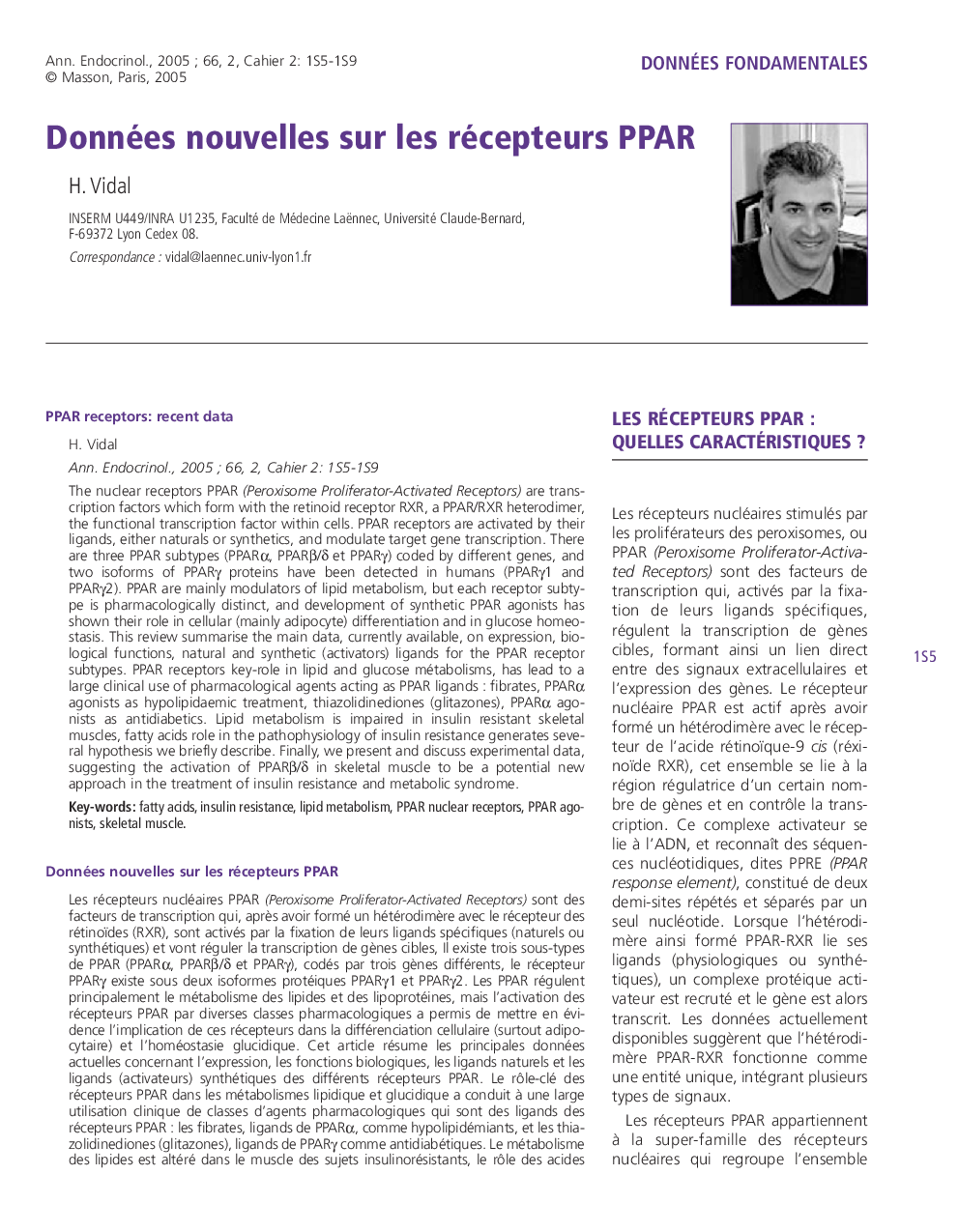| Article ID | Journal | Published Year | Pages | File Type |
|---|---|---|---|---|
| 9235927 | Annales d'Endocrinologie | 2005 | 5 Pages |
Abstract
The nuclear receptors PPAR (Peroxisome Proliferator-Activated Receptors) are transcription factors which form with the retinoid receptor RXR, a PPAR/RXR heterodimer, the functional transcription factor within cells. PPAR receptors are activated by their ligands, either naturals or synthetics, and modulate target gene transcription. There are three PPAR subtypes (PPARα, PPARβ/δ et PPARγ) coded by different genes, and two isoforms of PPARγ proteins have been detected in humans (PPARγ1 and PPARγ2). PPAR are mainly modulators of lipid metabolism, but each receptor subtype is pharmacologically distinct, and development of synthetic PPAR agonists has shown their role in cellular (mainly adipocyte) differentiation and in glucose homeostasis. This review summarise the main data, currently available, on expression, biological functions, natural and synthetic (activators) ligands for the PPAR receptor subtypes. PPAR receptors key-role in lipid and glucose métabolisms, has lead to a large clinical use of pharmacological agents acting as PPAR ligands : fibrates, PPARα agonists as hypolipidaemic treatment, thiazolidinediones (glitazones), PPARα agonists as antidiabetics. Lipid metabolism is impaired in insulin resistant skeletal muscles, fatty acids role in the pathophysiology of insulin resistance generates several hypothesis we briefly describe. Finally, we present and discuss experimental data, suggesting the activation of PPARβ/δ in skeletal muscle to be a potential new approach in the treatment of insulin resistance and metabolic syndrome.
Keywords
Related Topics
Health Sciences
Medicine and Dentistry
Endocrinology, Diabetes and Metabolism
Authors
H. Vidal,
